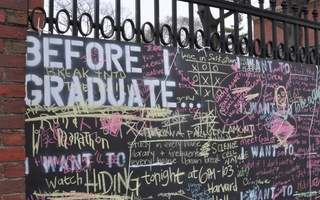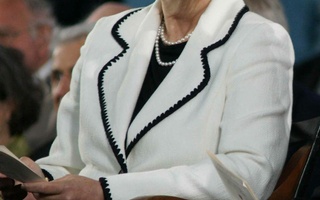As the virality of the ALS Ice Bucket Challenge ushered in a new era of philanthropy this summer, critics of the millennial generation certainly held their breath. For once, they thought, social media is taking on its do-good, action-oriented, politicized transformation! Well, that is, as “do-good” as posting a video pouring an ice bucket and donating a week’s worth of babysitting can get.
In the end, however, the philanthropic financial success of the Ice Bucket Challenge cannot be denied. Though many complained that it was simply another form of faux-philanthropic narcissism (“Half the people don’t even know what ASL—I mean ALS—is!”), one cannot deny the impact of the Challenge as grassroots donations exceeded over $100 million fundraised in only 30 days, compared to the $2.8 million the ALS Foundation received at the same time last year. This translates to better research, patient support, and administration for the Foundation.
Yet, while the Ice Bucket Challenge was gaining momentum, there were a plethora of other events that occurred that desperately could have had a share of people’s charity as well: namely, the families deeply affected by the shooting of Michael Brown in Ferguson, Missouri.
To this day, the money raised for Officer Darren Wilson (over $350,00), the police officer who killed Brown, far exceeds the amount of money raised for the Mike Brown Memorial Fund (over $200,000). To this day, Darren Wilson is on paid vacation while answers of justice on behalf of Brown’s family still go unanswered.
While it may seem illogical to compare the timing and philanthropy of the ALS Ice Bucket Challenge to the tragic killing of Mike Brown in Ferguson, I cannot help but think that the dichotomy of race in philanthropic giving is a new phenomenon. On the ALS website, I found an interesting fact: Nearly 93 percent of the patients afflicted with ALS are of Caucasian descent.
In addition to its clever use of social media, I cannot help but think that the virality of the challenge has a lot to do with its patient racial demographic.
I am not denouncing efforts for the ALS Ice Bucket Challenge. I personally believe it is an ingenious use of social media methods in order to raise awareness and philanthropy about neglected cause, a medical issue largely ignored because of the scarcity of its numbers, affecting a little over 5,600 lives each year. Each life deserves to be as full as possible.
Yet, on this same principle of each life being equally deserving as the other, philanthropy is telling of how the act of giving—especially through the lens of medical research—is very much so a political and racial issue.
The medical funding of sickle cell disease versus that of cystic fibrosis is one of the most telling differences of this political and racial landscape.
Sickle cell disease and cystic fibrosis are both autosomal, recessive genetic disorders. Sickle cell disease is the most common genetic blood disorder in the U.S. affecting 70,000-100,000 Americans. Cystic fibrosis affects 30,000 Americans.
But sickle cell disease disproportionately affects the black and Hispanic populations: affecting 1 in 600 black and 1 in 36,000 Hispanic infants. On the other hand, cystic fibrosis is most common among whites, with 1 in 2,500 North American Caucasians born with the disease.
In 2003, revenue for the Sickle Cell Disease Association of America was less than $500,000, whereas cystic fibrosis research funding was $152 million for the CF Foundation, a 300-fold difference.
Even according to recent reports from March 2014, the National Institute of Health funds cystic fibrosis ($80 million) more than sickle cell disease ($70 million).
While we claim to be living in a “do-good” society and share photos of our selflessness on social media, we must ask ourselves: Are we “doing good” good enough?
It is true that many do not know of the demographics of the ALS patient population. It is true that many still don’t know what ALS even is.
Yet while these ALS Ice Bucket Challenge promotion videos undoubtedly enabled us to see the humanity of ALS patients, would parallel videos of SCD patients of color have moved us to share and donate in the same way?
Can I say that the same virality—social media and donation dollars—would have happened if it were, say, the Sickle Cell Disease Ice Bucket Challenge?
I wish I could say yes. And I hope one day I will.
Bernadette N. Lim ’16 is a joint human evolutionary biology and women, gender and sexuality studies concentrator in Dunster House.
Read more in Opinion
More Caution Needed in SyriaRecommended Articles
-
NCAA Introduces Sickle Cell TestingThis year, the NCAA has mandated that college athletes either be tested for Sickle Cell trait or sign a waiver declining testing.
-
 On ‘Bucket List,’ Both Joy and Tears
On ‘Bucket List,’ Both Joy and Tears -
Researchers Trace Evolution of Cystic Fibrosis InfectionThe scientists, using DNA sequencing technology, were able to retrace the evolution of specific bacteria and identify 17 adaptive genes that increase bacterial survival.
-
 The Daredevil Bucket List
The Daredevil Bucket List













